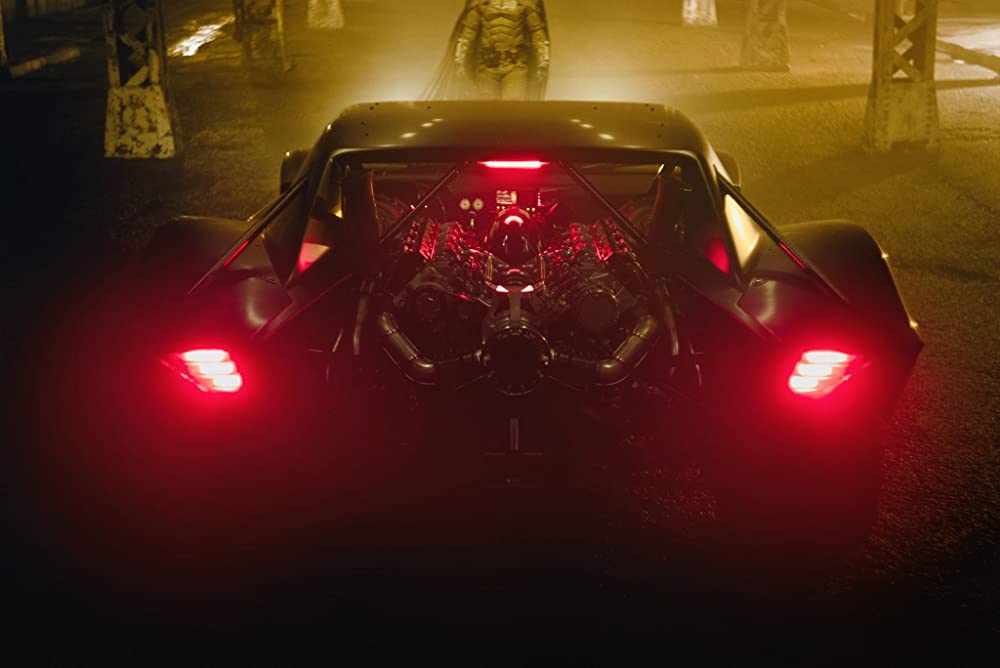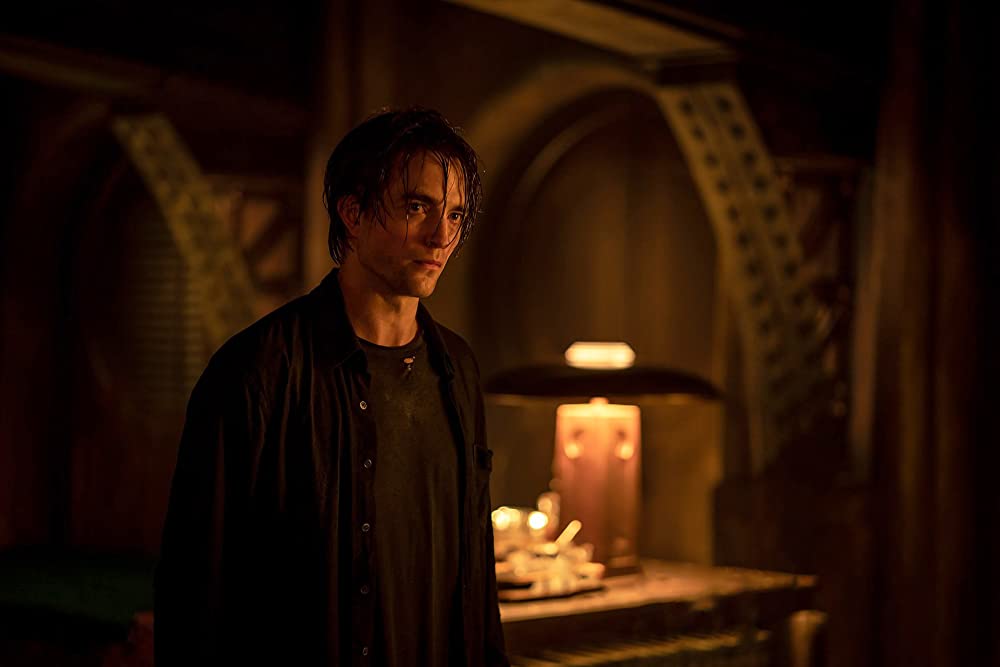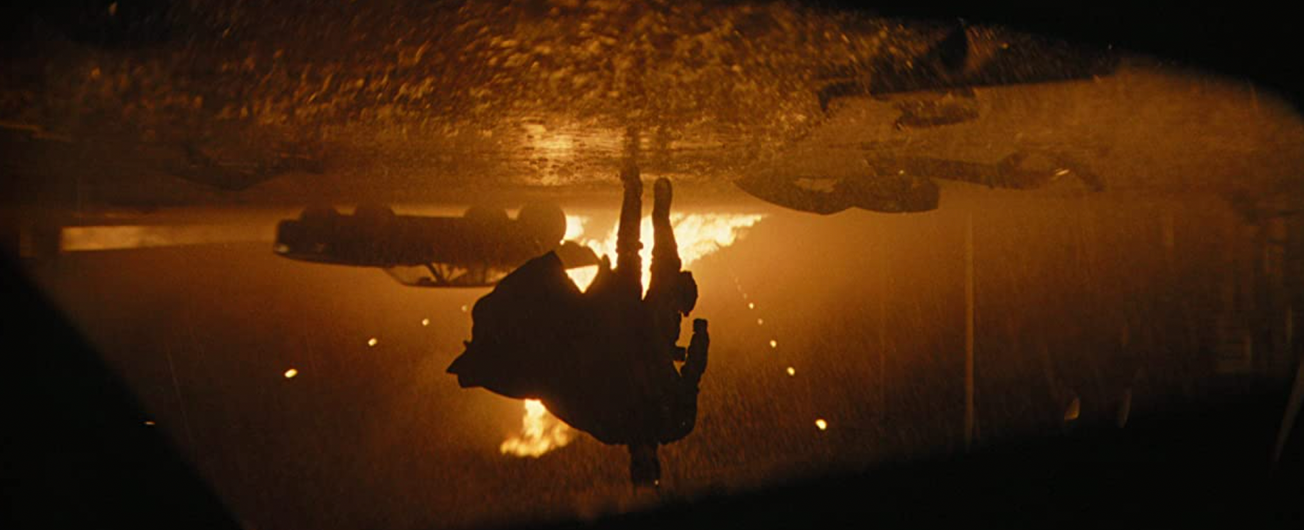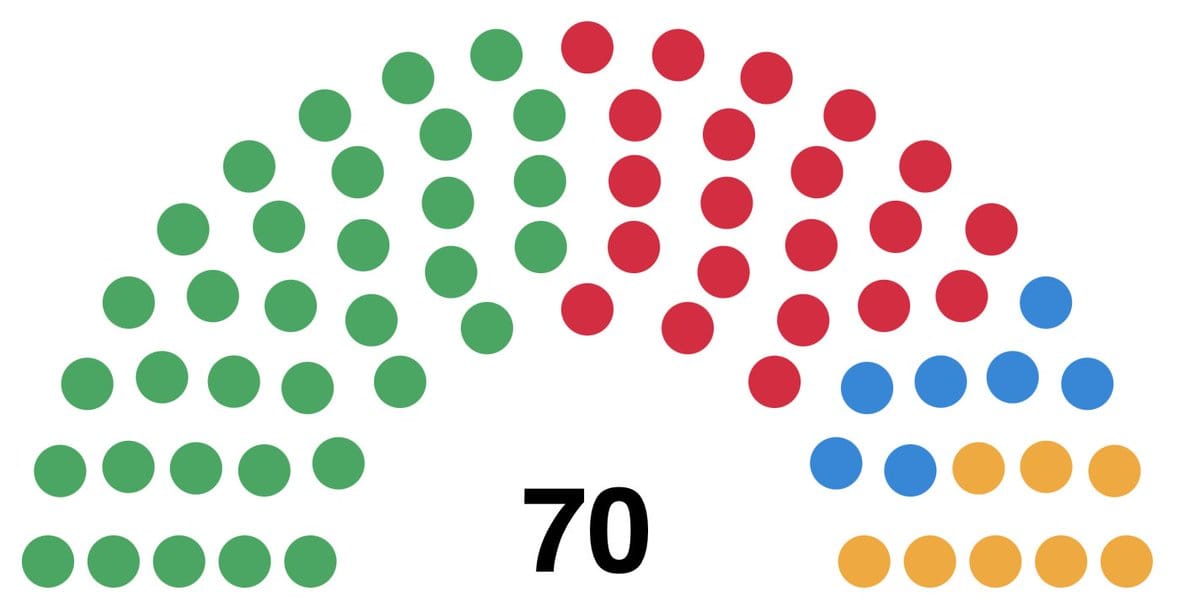By Milo Ryan, Second Year, English Literature
Sitting through the seemingly endless trailer reels prior to watching Matt Reeves’ The Batman (2022), awaiting hopefully at the prospect of seeing yet another presentation of the caped crusader that has domineered pop culture for almost a century, I became acutely aware of the solipsism of today’s studio cinema.
An isolated contemporary trend in filmmaking has created a feedback loop that relies solely upon tasteless reflexivity and catalyses the notion that it is possible to do away with stylisation so long as Captain America’s mask had the wings on it. Trailers for Dr Strange in the Multiverse of Madness (2022) and Moon Knight (2022-) before showtime only reaffirmed fearful expectations of enduring 176 minutes of yet another studio reboot that has programmed audiences to clap like seals for the “unexpected” return of heroes and villains they were once eager to leave behind. With this neo-noir adaptation, however, Batman is imbued with a mystery and realism that allows it to stand out amongst the over saturated superhero sub-genre.

All sharp jawline and murky black eyeliner, Robert Pattinson’s performance takes Batman to levels of gloom previously thought unimaginable. Emerging into the public eye in vampiric form in Twilight (2008) it seems fitting that his latest role had him adopting a bat-like guise yet again. True to his acting history, dialogue at times felt so melodramatically operatic that the hopelessly desolate figure of Edward Cullen could be seen in the greasy hair and pale skin of Bruce’s melancholic utterances. In this deliberately hyperbolic presentation however, Reeves’ commemorates the campiness of Joel Schumacher’s Batman and Robin, choosing to tactfully employ an element of cheesiness that was crucial in the initial characterisation of the masked vigilante.

Pattinson’s performance, whilst undoubtedly compelling when viewed in isolation, shines best when on screen with co-star Zoë Kravitz. Mimicking the sensuality of Michelle Pfeiffer and sophistication of Anne Hathaway, Kravitz creates in Selina Kyle a character whose very presence is the synthesis of the cat women that came before her. In her we see the very city of Gotham. Whether exhibited in her frustrations at Gotham’s institutional venality or reflected literally on the patent leather of her diverse and stunning wardrobe, Kravitz’s Catwoman is a masked hero intrinsically linked to the landscape and people of the city. Colourful wig changes throughout and the isolated shots of silver tearstained eyeshadow reflecting dancing bodies in a blue-lit nightclub proved integral to such success, becoming the final component that solidified Kravitz’s Catwoman as a thoroughly well imagined icon, fit to stand amongst the titans of a franchise established long before her.

While gadgetry is a key component of every Batman movie, the latest tool at the caped crusader’s disposal serves to mirror the movie’s most important theme. Without spoiling specificities, this new apparatus allows Batman to sift through crime scenes or surveil suspects without them realising they’re being watched. In a movie that opens with a voiceover in which Pattinson’s Batman notes that Gotham’s criminal element ‘think I’m hiding in the shadows. But I am the shadows’, it is significant that the tool most tied to Batman is one defined by secrecy. This tool symbolically mirrors Reeve’s wider commentary on class, institutional corruption and cancel culture with its tie to the contemplation of questions that have been ever as prevalent within mainstream discourse in the past year. The question of who is seen and who goes unseen in society, and how problems that are consciously ignored, if not intentionally buried, can multiply in the shadows.

Dune (2021) cinematographer, Greg Fraiser, similarly hints to the movie’s wider themes in his use of mirrors and reflection throughout. Just as the use of surveillance allows Batman to engage in a unique form of self-reflection, so too does Fraiser’s camera work hint to yet another level of subconscious introspection detected in shots of Pattinson reflected in neon-lit puddles or motorcycle wing mirrors. Undoubtedly influenced by psychological thrillers like David Fincher’s Seven (1996) or James Wan’s Saw (2004), Reeves and Fraiser imbue grit and tension into the world of Gotham, hinting back to the likes of The Dark Knight (2008) with the same edgy realism.

At times this film did feel like a movie with a run time of two hours and fifty-six minutes. With the sustained repetition of interactions between particular characters, some versatility could definitely have been warranted. Some dialogue too felt clunky and out of place at times. Overall, however, this film asserts itself into the renowned batman franchise with stylish idiosyncrasy, immersive world-building and beautiful cinematography, utilising references to the subculture from which they came in a way that lingers, like Pattinson throughout, as a shadow.
Featured Image: Warner Bros. & DC Comics, IMDB
How did you find Pattinson's Batman?







